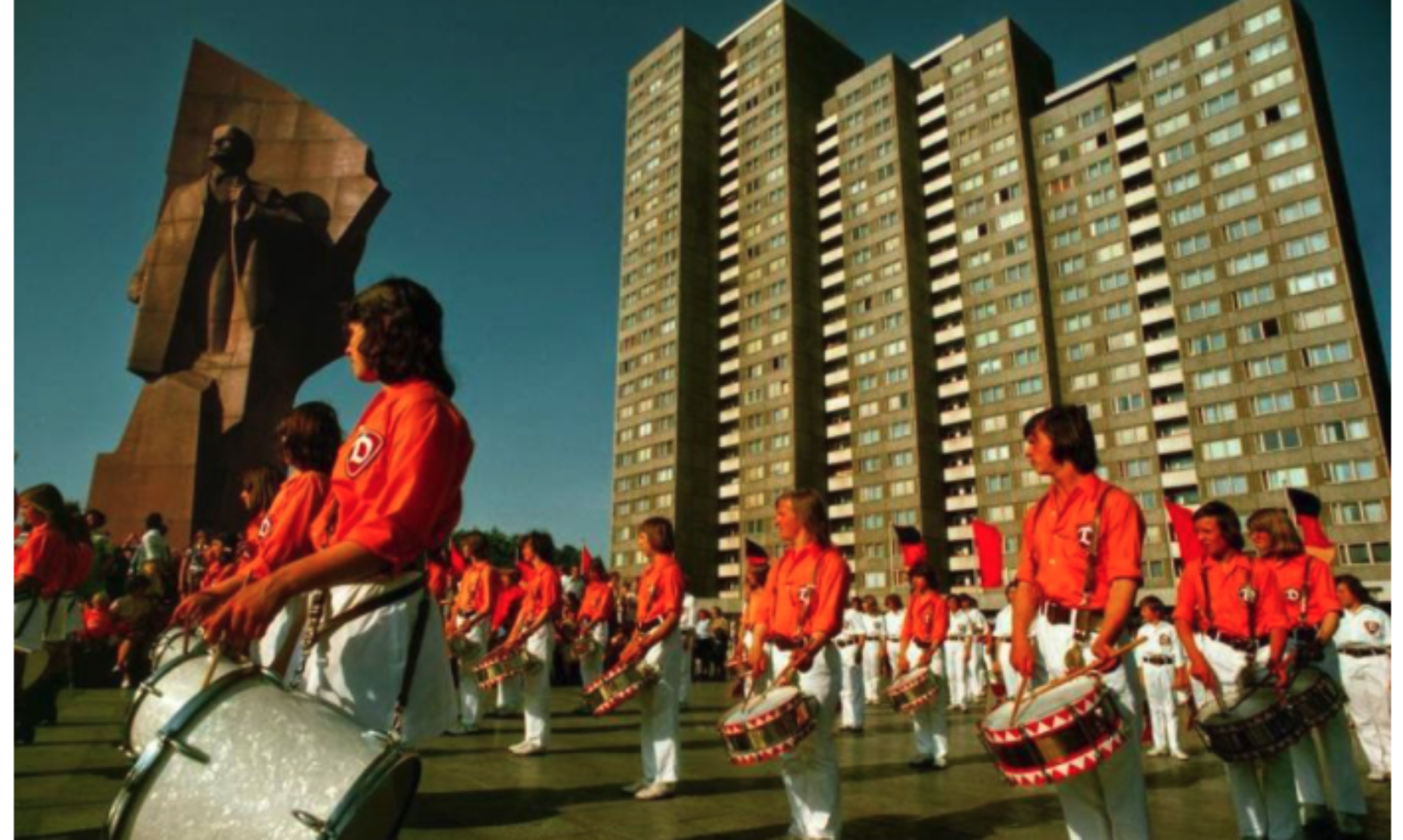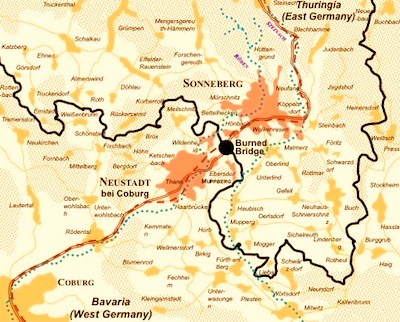In Burned Bridge, we are walked through the early establishment of the region and the contrast between Sonnenberg and Neustadt, the former of which ends up in the Soviet zone of occupation and the latter of which becomes part of the West. We see how each region was impacted by the 1920s global depression, how they subsequently played a part in the rise of Nazism, the Second World War, the Holocaust, and the post-war struggle between East and West during occupation, taking us into the beginning of the Cold War. Before class on Monday, please consider the following questions and if convenient, take a moment to answer or post a reply.
- On page 29, Sheffer details how “Denazification records in Sonneberg are sparse, and much of the city’s Nazi hierarchy had already fled west; still, it appears that Sonneberg’s commission handled half as many cases as Neustadt’s (470 to 1,031), despite the city’s much larger population, and demoted or removed 234 people from their jobs. Many were rehired after a few months.” However, in the following paragraph, she notes that, “The West was gentler to ex-Nazis. Initially, American efforts at denazification involved 28 percent of the zone’s adult population, though pragmatism and halfhearted prosecution disproportionately hurt the ‘small fry’ while ‘big fish’ got away.” Why do you think this was? Which effort was the bigger failure? How could Nazis who maintained their positions have shaped the political landscape (particularly in the East)?
- How did the American Marshall Plan & its objectives in West Germany differ from Stalin’s in the East? What were the shortcomings of each plan? Lastly, was the creation of the FRG (Federal Republic of Germany, or the West German government headquartered in Bonn) an act of aggression by the West or merely a response to Soviet actions along the border? (the same question can be asked for each sides’ dueling economic and joint defense councils/alliances, see page 50)
- Who is to blame for the success of black market operations, the West or the East? Most goods being sold on the market were coming from the East (pg. 52). What does this say about the strength of the post-war economy in the East compared to the West?
- In Chapter 4 we learn that the Eastern authorities planned to open the border as a PR stunt to cast a negative light on the West (pg. 75). How did this backfire? To what extent do you think this contributed to further crackdowns on travel? Do you think it was successful and served their (the Eastern authorities’) intentions? What about the subsequent border openings and the breach on November 9th?
- In chapter 5 we gain insight into the 1952 border crackdowns which are what formally initiated a closed-off East Germany. There was death by suicide, psychological damage, and trauma dealt to those who had to move their entire household and as many belongings as they could in less than 24 hours…some cases even less. Neighbors turned on one another and pointed fingers to incriminate the innocent. Are there any parallels to Stalin’s purges or the various crimes perpetrated by Hitler’s Third Reich? Do you think this complicated efforts by the Soviets and GDR to distance themselves from the Nazi authorities?
Thank you and I look forward to discussing these with you all tomorrow (Monday)!


In response to your first question with the issue of the ‘small fry’ being disproportionately impacted by denazification with the ‘big fish’ getting away, I think this was due to a need for experienced and educated government officials. Unlike the East where the Soviet Union conveniently had a German Communist who fled to Moscow available for president and was trying to spread a unified ideology in an area where it had little support, the West chose to follow what the UN agreed upon – the promotion of self-determination and self-government. And with the idea of self-government in Germany following WW2 in heavily Nazified communities like Neustadt, this results in the support for ‘big fish’ being once again elected to positions of power. In comparison, the ‘small fry’ appeared to be more expendable and the new West Germany could “afford” for these people to pay for their crimes. And, as we saw in Dr. Strangelove, America maintained a close relationship with ex-Nazis so much so that they were able to obtain positions to work for our own government. While both the East and West failed in the sense that they did not uproot Nazism, I am more inclined to say that the East failed because they desired to replace the Nazi ideology with a Communist ideology whereas the West was willing to allow Nazism to coexist to a certain extent (or emerge in the form of far right leadership) within a democratic government.